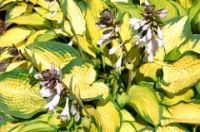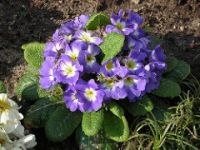Tips For Propagating By Division
Stocking a garden and increasing the amount of plant life in a given area can be an expensive process if you buy all your plants from garden centres or plant nurseries. But by growing many of your own plants from seed, and using propagation methods to increase your existing plant stock, you can create a beautiful and productive garden at a much lower cost. One of the easiest forms of propagation for many perennial plants is propagating by division.
Propagation by division simply involves splitting a mature perennial plant into two or more self-supporting sections. It is important to remember that since each of these sections must be self-supporting, a crown and root section must be kept in tact for each part.
When to Divide Perennials
Propagating by division is usually carried out in the spring, or in the autumn for some plants. Most perennials will benefit from division every two or three years, not only to increase your stock of plants but also in order to maintain the health and vigour of existing plants. Though where extra plants are required, this can often be done more frequently.
 Some Plants Suitable for Propagation By Division
Some Plants Suitable for Propagation By Division
 A wide range of perennial plants are suitable for diving in this way. A few examples of plants which can be propagated in this way include: agapanthus, anemone, aster, bergenia, convallaria, crocosmia, dierama, delphinium, epimedium, eryngium, euphorbia, gentiana, geranium, helianthus, hemerocallis, hosta, iris, lychnis, lysichiton, lysimachia, ornamental grasses, primula, ranunculus, salvia, sedum, verbena and zantedeschia.
A wide range of perennial plants are suitable for diving in this way. A few examples of plants which can be propagated in this way include: agapanthus, anemone, aster, bergenia, convallaria, crocosmia, dierama, delphinium, epimedium, eryngium, euphorbia, gentiana, geranium, helianthus, hemerocallis, hosta, iris, lychnis, lysichiton, lysimachia, ornamental grasses, primula, ranunculus, salvia, sedum, verbena and zantedeschia.
How To Propagate By Division
In order to go about dividing most perennials, ease plants carefully from the soil using a garden fork, working outwards from the crown to limit any damage to the plant's roots. Some plants will create individual, small plants which can be teased out from around the edges of the clump and simply replanted elsewhere. Small plants with fibrous roots can be lifted and gently pulled apart by hand, taking care to preserve a shoot and roots for each section. For larger plants with fibrous roots, you can separate the clumps by using two garden forks inserted in the middle, back to back, and gently eased apart. In some cases, a knife may be required to separate the clumps. Where this is the case, be sure to use a good, sharp knife in order to minimise the risk of infection to the plant. Where a plant has a woody crown or fleshy roots, a knife or spade will definitely be required in order to bisect the plant. In such cases, aim to produce new plants which have around three to five healthy shoots.
Taking Care of Plant Divisions
After you have divided your perennials, you should replant them as soon as possible. Hardier, sturdier plants will usually do fine if planted straight away in their final growing positions, while other, more tender or delicate plants may do better if placed initially in containers, and kept in sheltered, frost-free locations until they have be able to build up some strength.